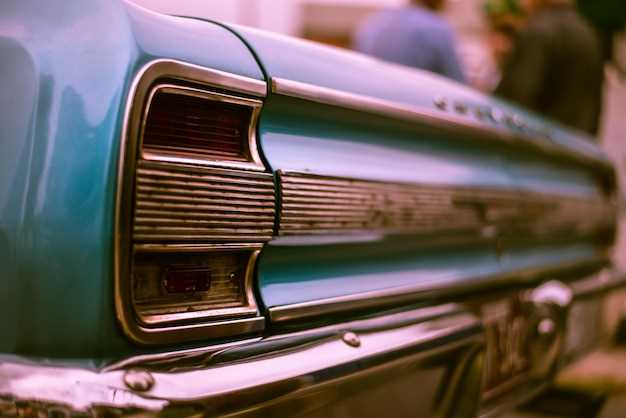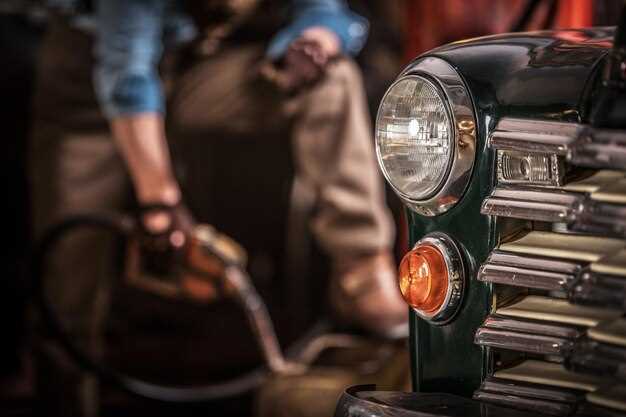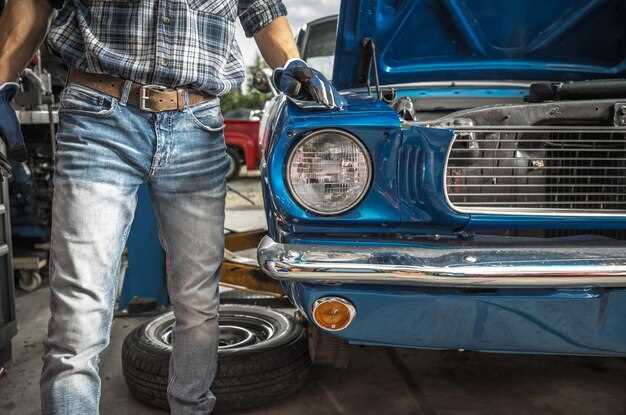

Restoring classic cars is not just a hobby; it’s a passion that connects enthusiasts with the rich history of automotive engineering. Whether you are breathing new life into a vintage car or preserving a cherished family heirloom, the restoration process requires careful planning and dedication. Understanding the intricacies of car restoration can make the difference between a successful project and a frustrating experience.
Before you embark on your restoration journey, it is essential to familiarize yourself with the specific requirements of the make and model you’re working on. Classic cars often have unique features and parts that are difficult to source, so conducting thorough research is crucial. This knowledge will not only guide your restoration decisions but will also help you avoid common pitfalls that could derail your project.
Additionally, having a systematic approach to the restoration process is vital. From assessing the car’s condition to creating a realistic budget and timeline, each step should be meticulously planned. Paying attention to detail in every aspect, from bodywork to engine rebuilding, will ensure that your classic car not only looks stunning but also performs optimally. With the right tips and knowledge, restoring classic cars can be a rewarding and fulfilling experience.
Choosing the Right Tools for Your Restoration Project

When embarking on a classic car restoration project, selecting the appropriate tools is crucial for achieving desired results. A well-equipped workshop not only enhances efficiency but also elevates the quality of your work. Start by understanding the fundamental categories of tools needed for restoration: hand tools, power tools, and specialty tools.
Hand tools are essential for tasks that require precision and control. Invest in high-quality wrenches, screwdrivers, pliers, and sockets. These tools allow you to remove and install components with care, minimizing damage to sensitive parts. A reliable ratchet set can significantly speed up the disassembly process and is invaluable during reassembly.
Power tools can make arduous tasks more manageable. A good drill and a variety of drill bits are necessary for creating holes or removing rusted bolts. An angle grinder is useful for cutting and shaping metal, while a sander helps prepare surfaces for painting. However, always prioritize safety by using the appropriate gear and adhering to manufacturer guidelines.
Specialty tools are often needed for specific aspects of classic car restoration. For instance, engine hoists are vital for lifting heavy engine blocks, while compression testers help evaluate engine health. A comprehensive manual for your classic car can guide you on particular tools required for unique components, such as suspension setups or electrical systems.
Moreover, consider investing in tool organization systems. Keeping your tools organized saves time and prevents frustration during the restoration process. Toolboxes, pegboards, and rolling carts are excellent options to consider, ensuring that your workspace remains tidy and efficient.
Ultimately, investing in the right tools enhances not only the restoration process but also the enjoyment derived from working on classic cars. A thoughtful selection of tools equips you to tackle each project with confidence, paving the way towards a successful restoration journey.
Identifying Common Rust Issues and How to Fix Them

Rust is one of the most common issues encountered during the restoration of classic cars. Understanding how to identify and address rust problems is crucial for preserving the integrity and value of these vehicles. There are several stages of rust development that restorers should be familiar with: surface rust, scale rust, and penetrative rust.
Surface rust appears as a reddish-brown discoloration on the metal and is usually the result of moisture exposure. It can typically be removed easily with sandpaper or a wire brush. Once the rust is eliminated, applying a rust-inhibiting primer will help to prevent recurrence. Be sure to repaint the affected area to match the rest of the vehicle.
Scale rust forms when surface rust is left untreated. This type of rust causes the metal to flake and degrade, requiring more extensive measures. The best approach is to sand the area to remove all loose rust and then apply a rust converter, which transforms the rust into a stable compound. After treatment, follow up with primer and the appropriate paint.
Penetrative rust is the most severe stage, where rust has compromised the structural integrity of the metal. This condition often necessitates cutting out the damaged areas and replacing them with new metal patches. When making these repairs, ensure that the new sections are treated with rust preventative coating before installation. After fitting, weld or secure them in place, followed by sanding, priming, and painting to achieve a seamless look.
Regular inspection is vital for early detection of rust issues. Pay close attention to areas prone to moisture accumulation, such as wheel wells, undercarriage, and around windows. Additionally, maintaining proper drainage in these areas can reduce the likelihood of rust development. Protecting your classic car with quality wax and sealants can also provide an additional barrier against rust.
By understanding how to identify and effectively address rust issues, you can greatly enhance the longevity and aesthetic appeal of your classic car restoration project.
Finding Authentic Parts: Where to Look and What to Consider
Restoring a classic car often hinges on the availability of authentic parts. To ensure that your restoration project meets the original specifications, here are key places to look and important factors to consider.
- Online Marketplaces:
- eBay: A popular platform for both new and used automotive parts. Check seller ratings to ensure authenticity.
- Facebook Marketplace: Local listings can yield hidden gems, but always verify the parts before purchase.
- Specialty Forums: Enthusiast sites specific to your car model often have classified sections where members sell genuine parts.
- Traditional Auto Parts Stores:
- Local Shops: Some stores specialize in classic car parts and have knowledgeable staff.
- Chain Stores: Big retailers may carry aftermarket parts, often at lower prices but verify compatibility with original specs.
- Junkyards and Salvage Yards:
These sites can be treasure troves for rare components. Look for classic car-specific yards where vehicles are less likely to have been heavily modified.
- Restoration Specialists:
Consider collaborating with professionals who can guide you to reputable sources for authentic parts or even have parts in stock.
- Manufacturer Reproductions:
Some manufacturers produce exact replicas of classic parts. While they may not be original, they can be a viable option for your restoration.
When searching for authentic parts, consider the following:
- Authenticity: Ensure the part matches the original specifications. Look for part numbers and any identifying marks.
- Condition: Assess whether the part needs restoration itself. Evaluate for rust, damage, or wear to ensure it’s suitable for your build.
- Cost: Authentic parts can vary widely in price. Set a budget beforehand, but also be prepared for potential higher costs associated with rarity.
- Source Reputation: Research the seller’s reputation, especially in online marketplaces. Read reviews and ask for recommendations from fellow restorers.
- Return Policy: Understand the return policy of the seller. This is important if the part does not meet your expectations or needs.
In conclusion, finding authentic parts for your classic car restoration requires diligence and a keen understanding of where to search and what to look for. By utilizing the right resources and considering essential factors, you will enhance the authenticity and overall success of your restoration project.






